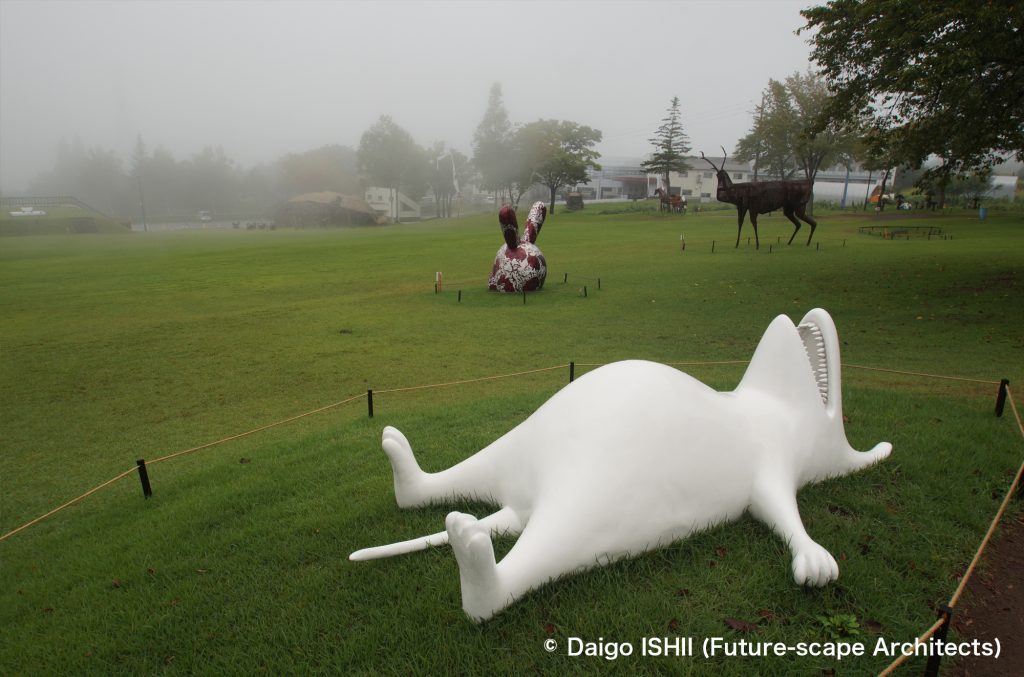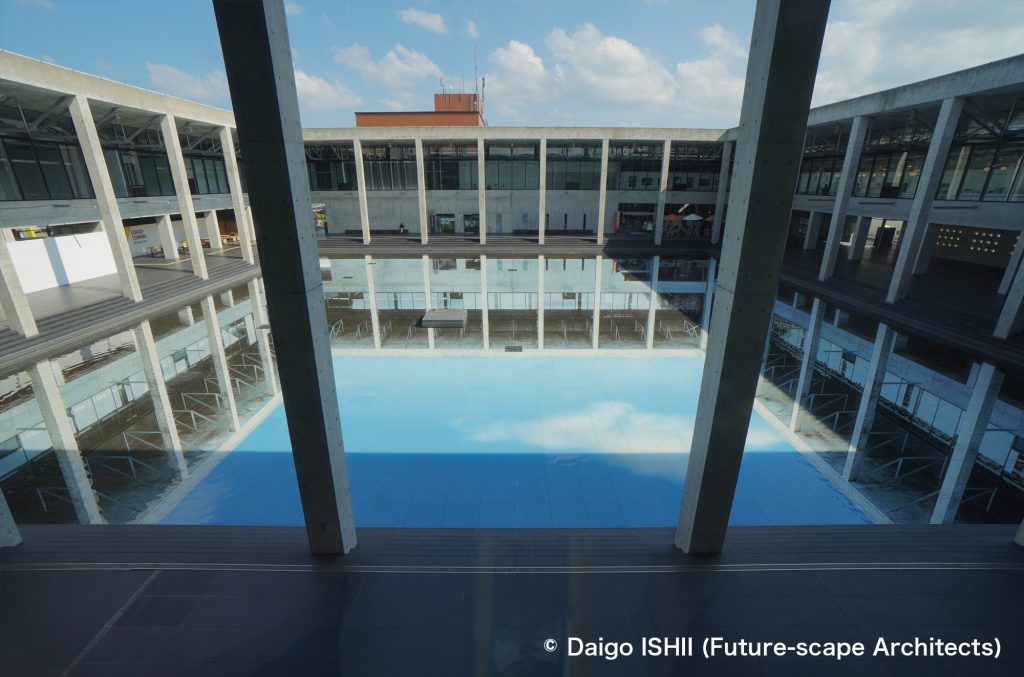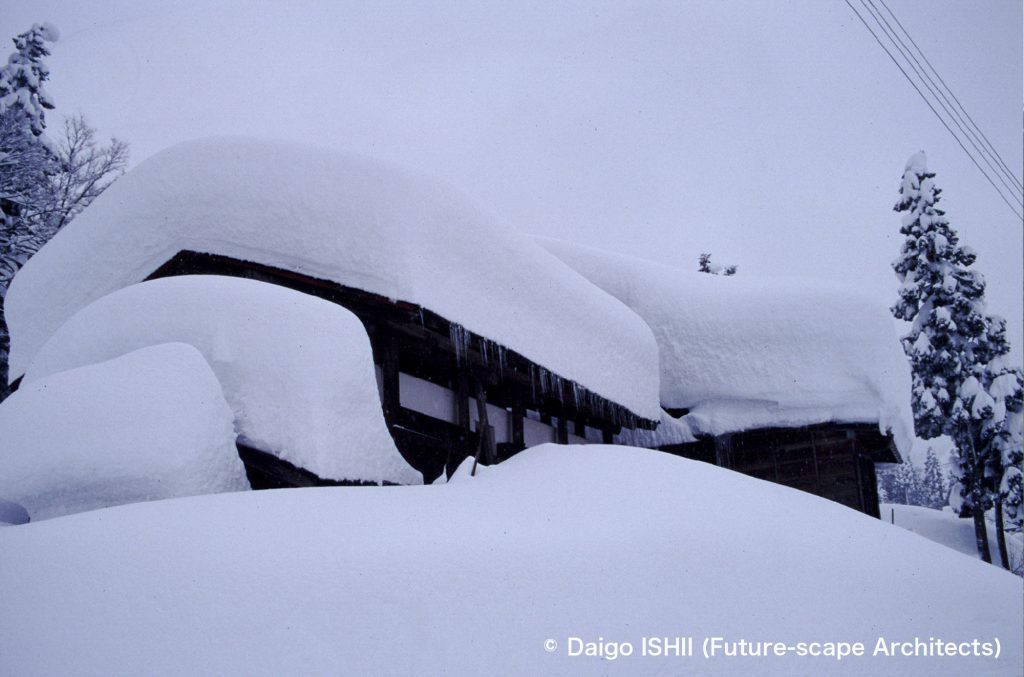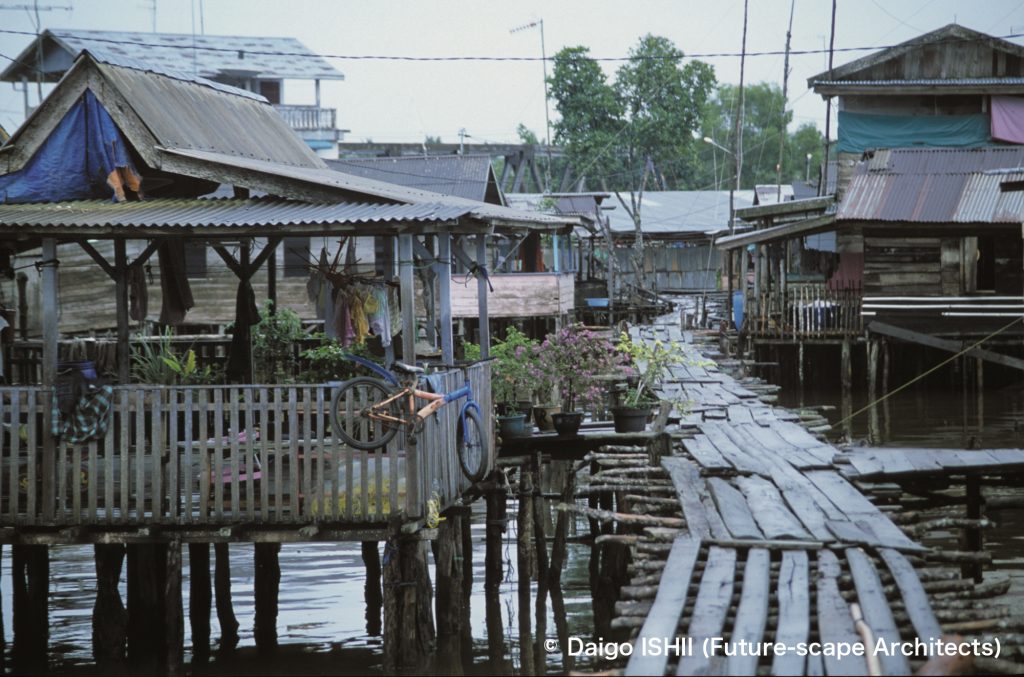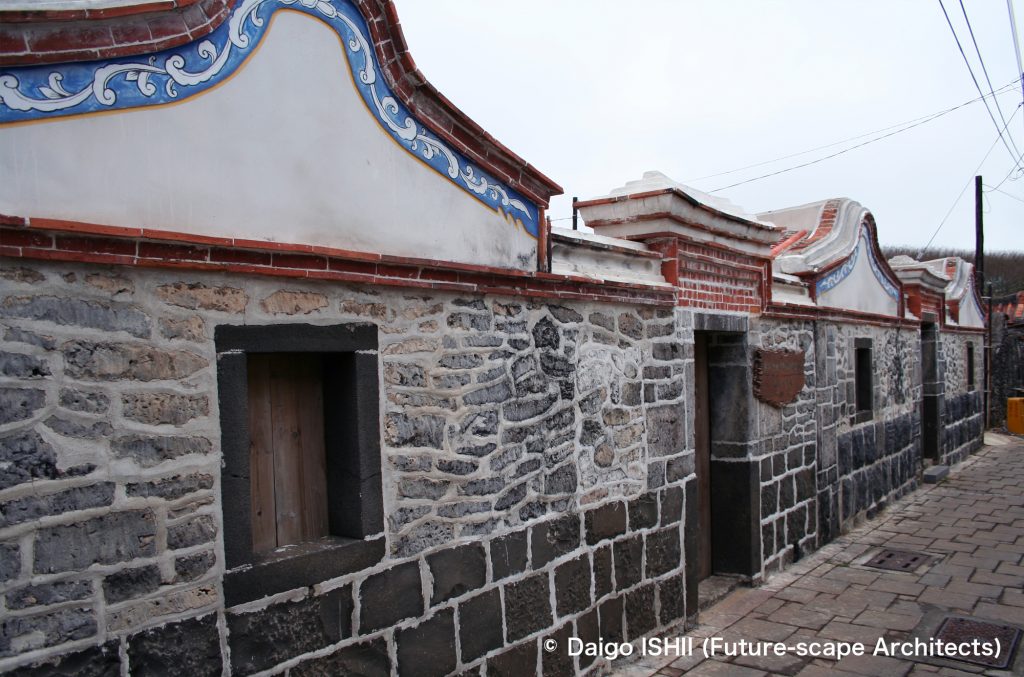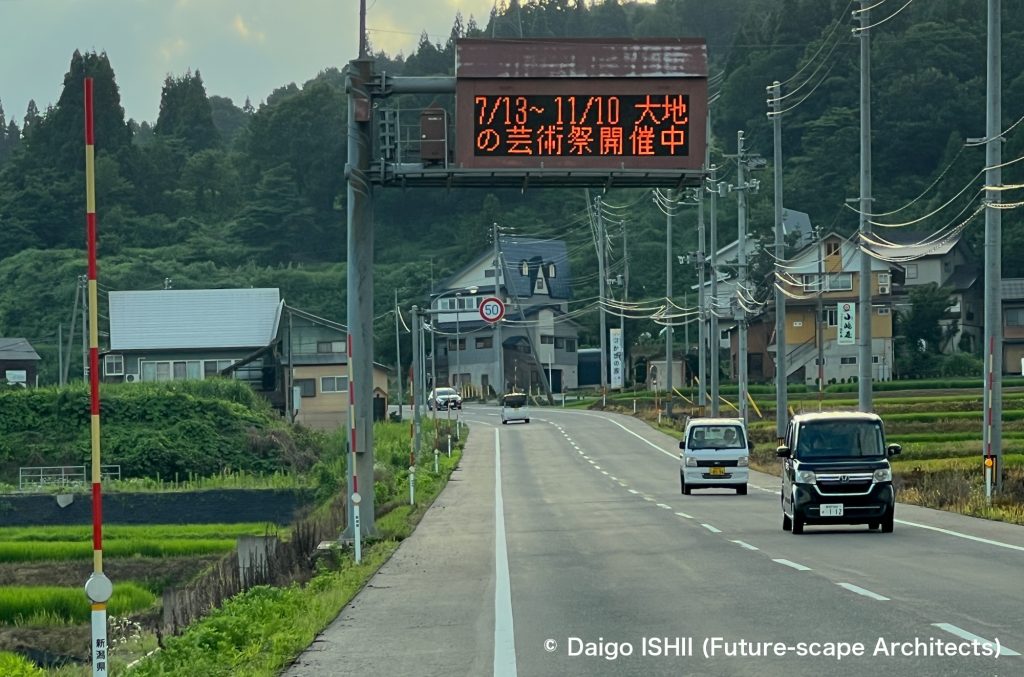高田の雁木通りを代表する大町で開かれるのが、二七の市と四九の市。
On Omachi Dori Street that represents Gangi Streets in Takada, Nishiti-no-ichi Market (Two and Seven Market) and Shiku-no-ichi Market (Four and Nine Market) are opened.

See Nishiti-no-ichi Market (Two and Seven Market) in the winter. The stand is produced with combination of bamboo and sheets.
大町の南寄りと中央で、少し場所をずらしながらも、通りには月に16日、市が立ちます。初めて見た30年以上前に比べ、最近は、高齢化や中心市街地の衰退で、店の数も人出も減っていますが、それでも、豪雪の真冬も含めて、1年中露天市が立つのがすばらしい。雪を遮る雁木が、市を支える仕掛けにもなっています。
地元向けの地元市民による商売で、自家収穫した筍や山菜とか、自分の農地のポートフォリオ以上のものを置かない店がほとんど。見栄えの悪いイチゴを買いましたが、店主の話では、庭で露地植えしたもの。温室全盛の時代に希少ないちごは、酸味と甘みのバランスがよく、なかなかの絶品。季節に合わせ、無理せず栽培したものが安い価格で手に入るサステナブルな市が近くにあれば、常連になりそうですが、そういう高田市民が少ないのが残念。
この市の見所が、竹とシートを組み合わせたシェード。30年前でさえ、他でなかなか見ませんでしたが、数が減ったとは言え、今も健在。1個40円という出血価格の大判焼き屋に、竹の屋台について聞くと、孟宗竹はしなるので、真竹でないとダメなのだが、真竹の産地の佐渡と高田近郊の直江津を結ぶ船が不定期運航になったため、簡単に手に入らなくなったそう。そして、350円という驚異的な価格に、2本購入した庭箒を扱う荒物屋の話では、北陸新幹線の開通で、大阪からの直通特急がなくなったため、セールスマンが来なくなり、商品の仕入れが難しくなったとのこと。
全国的な交通の再編と、ローカルで完結していると思っていた地場の露天市という、スケールの違う話が、ひとつにつながっていました。
In the southern and central part of the street, the market is held on 16 days a month, that is, on days with the final number of 2, 4, 7, and 9. Compared to when I first saw it more than 30 years ago, the number of stands and crowds have decreased due to the aging of the population and the decline of the downtown. Still, it is wonderful that the open-air market is open all year round, including in the middle of winter with heavy snowfall. Gangi that blocks the snow is a mechanism to support the market.
It's a local business for the locals. Most stands don't sell more than their self made production, such as home-harvested bamboo shoots and wild vegetables. I bought strawberries that didn't look good. According to the stand owner, she grew them outdoors in the garden. Strawberries, which were rare to get in the golden age of greenhouses, had a good balance of sourness and sweetness, and were quite exquisite. If a sustainable market, where I could get seasonally grown products at reasonable prices, was near my house, I would become a regular customer. It was a pity that there were not many Takada citizens.
The highlight of the market is ecological shades that combines bamboo and sheets. Even 30 years ago, those had been rare to see elsewhere, but they still remained here, even though their numbers decreased. I asked about bamboo stands at a Japanese sweet stand, where I bought sweets with an unbelievable price of 40 Japanese Yen. The owner explained me that it must have Madake Bamboo since Moso Bamboo easy to buy was too flexible, but it was difficult to obtain since a ferry connecting Sado, a production area of Madake Bamboo, and Naoetsu in the suburbs of Takada has become irregular. Then, according to the chandler from whom I bought two garden brooms for the surprising price of 350 Japanese yen, salesmen stopped visiting Takada due to disruption of the direct limited express trains from Osaka, 500 km from Takada.
The reorganization of transportation nationwide and the local open-air market, which are on different scales, were closely connected.
最近の市 / Recent Market
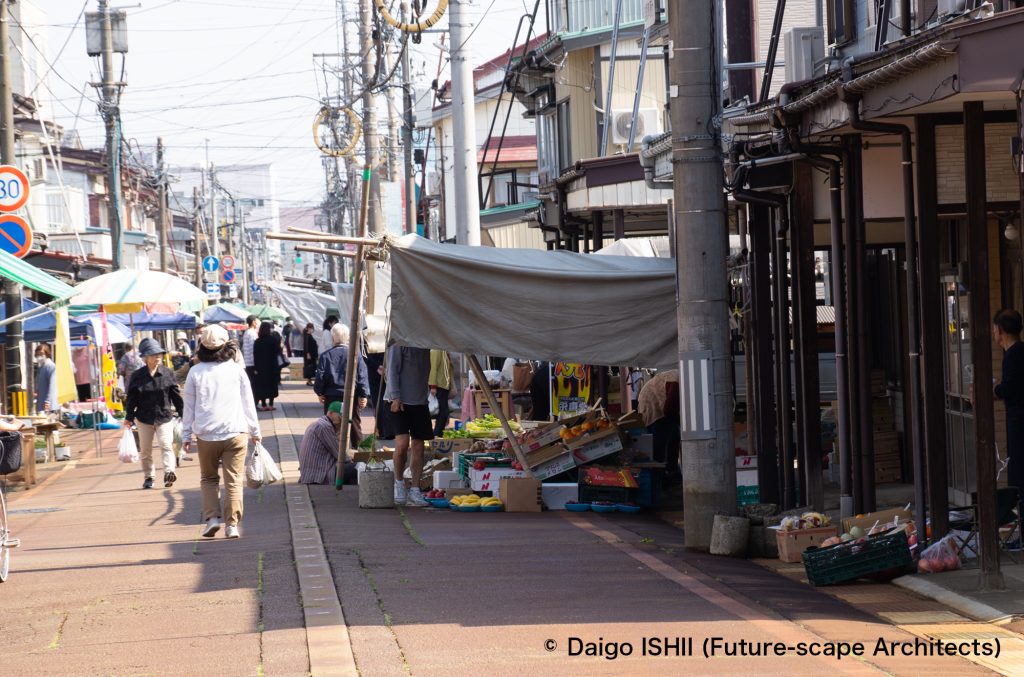
See Shiku-no-ichi Market (Four and Nine Market) in the summer. The stand produced with combination of bamboo and sheets remained.
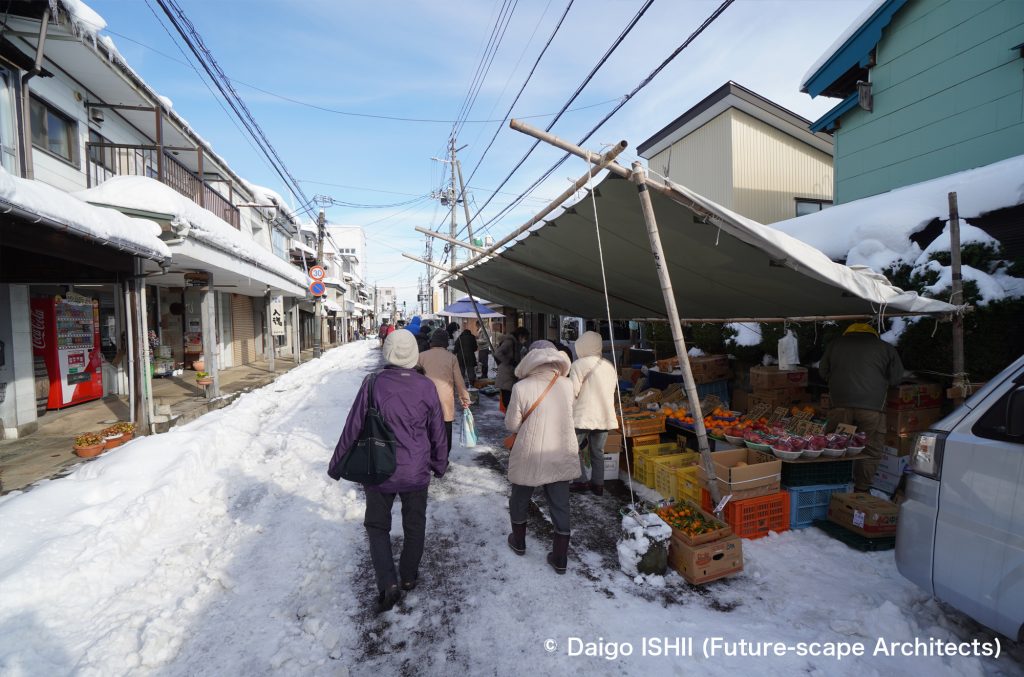
See Nishiti-no-ichi Market (Two and Seven Market) in the winter. The stand is produced with combination of bamboo and sheets.
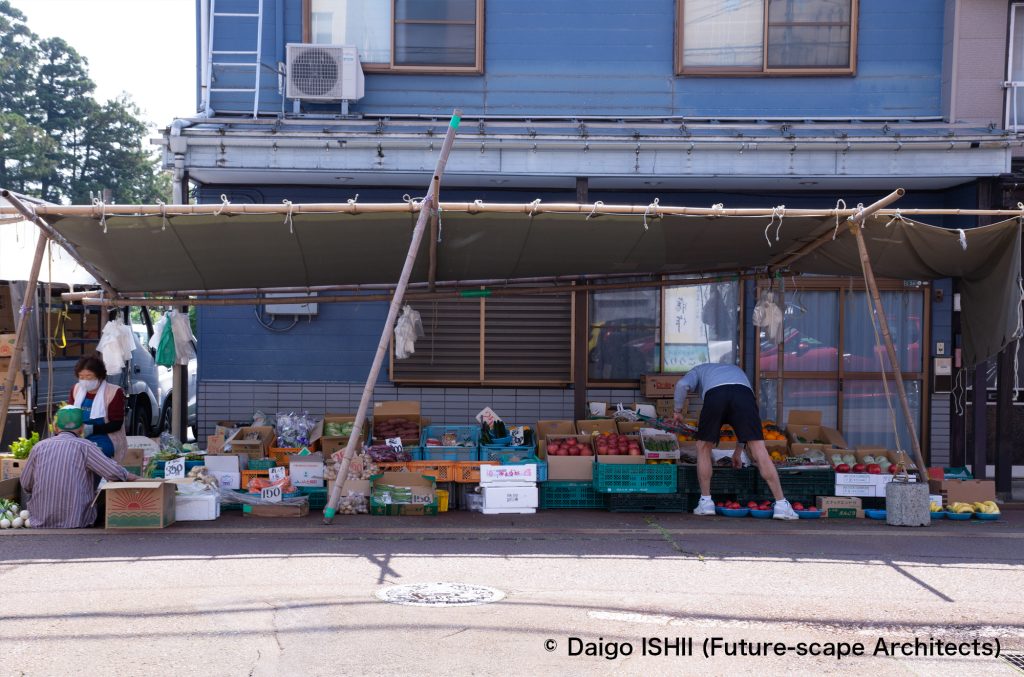
See Shiku-no-ichi Market (Four and Nine Market) in the summer. The stand is produced with combination of bamboo and sheets.
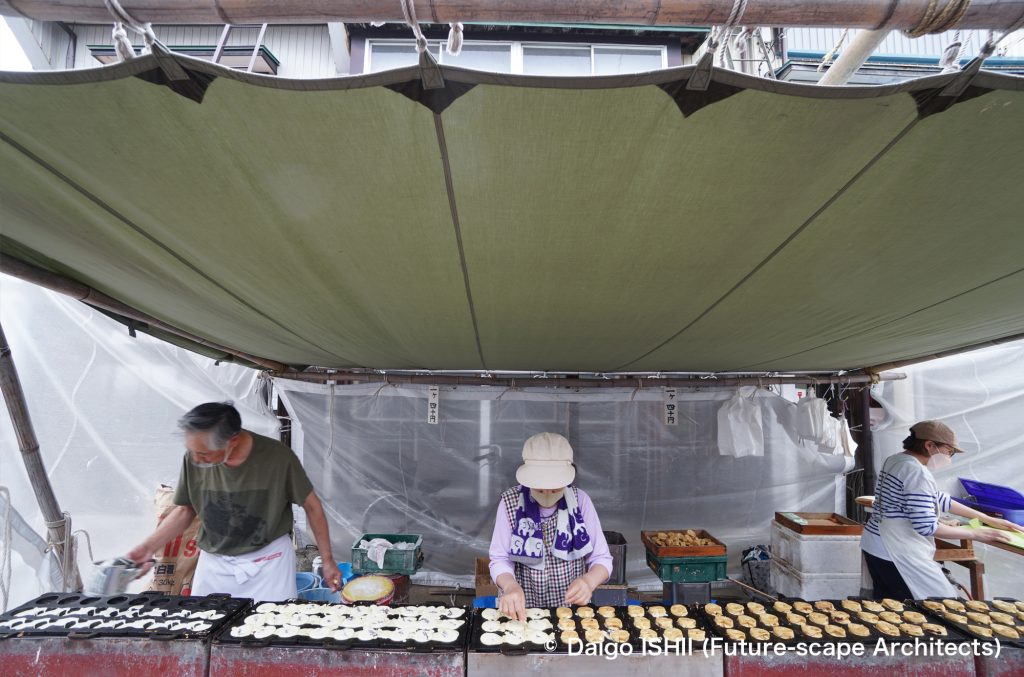
See the stand of Japanese sweet shop in Shiku-no-ichi Market (Four and Nine Market) in the summer.
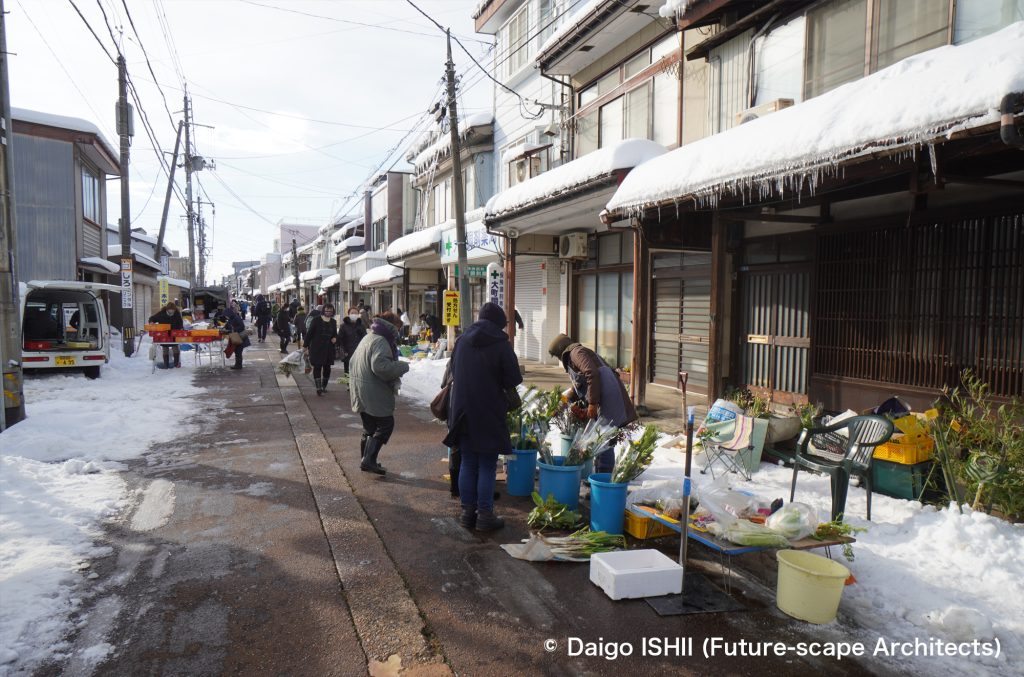
See Nishiti-no-ichi Market (Two and Seven Market) in the winter. The shopkeeper uses a part of Ganagi for her shop.
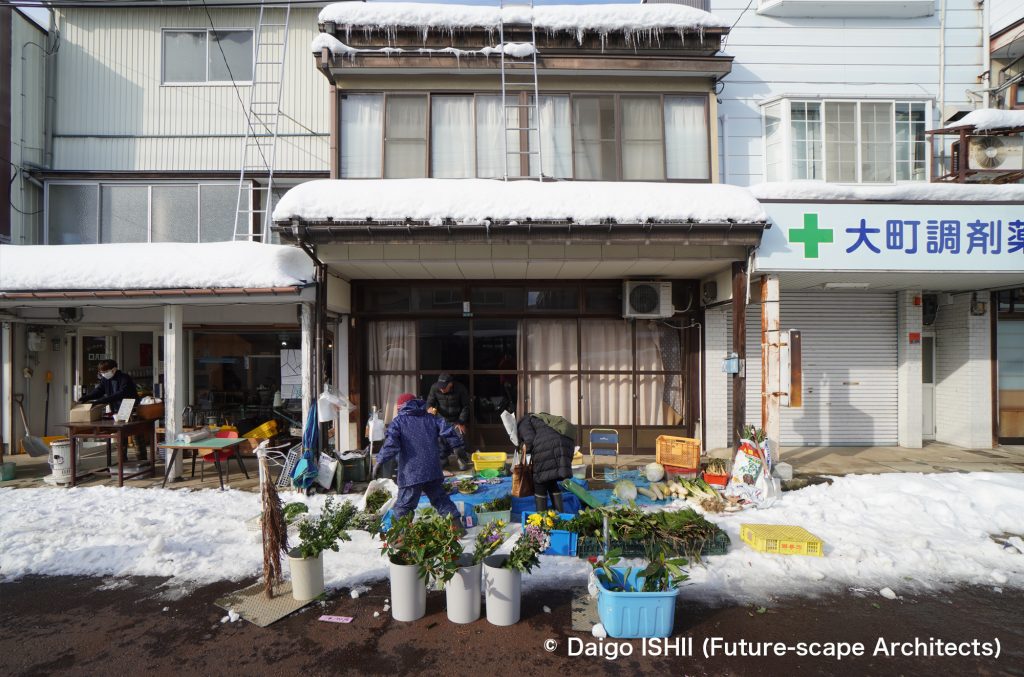
See Nishiti-no-ichi Market (Two and Seven Market) in the winter. The shopkeeper uses a part of Ganagi for her shop.
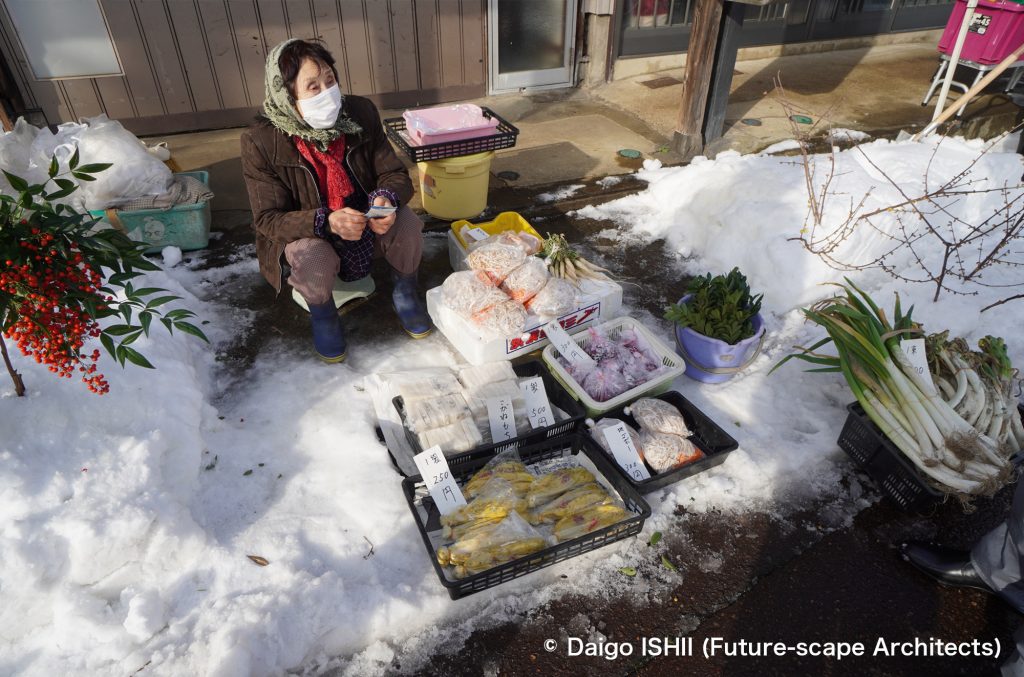
See Nishiti-no-ichi Market (Two and Seven Market) in the winter. The shopkeeper uses a part of Ganagi for her shop.
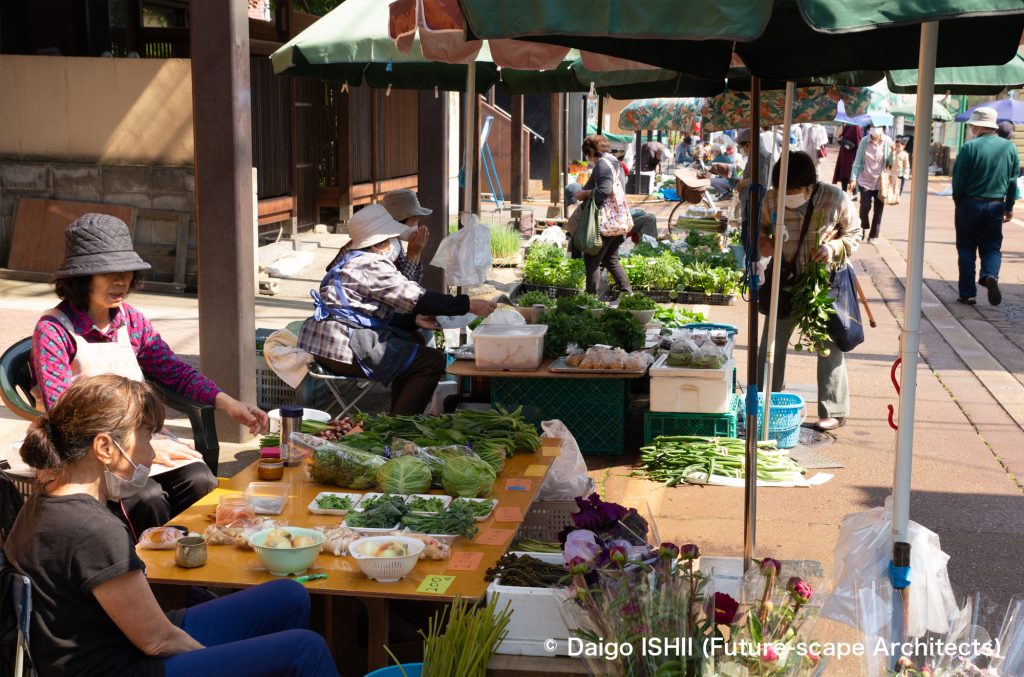
See Shiku-no-ichi Market (Four and Nine Market) in the summer. Shopkeepers sells their self-made vegetables.
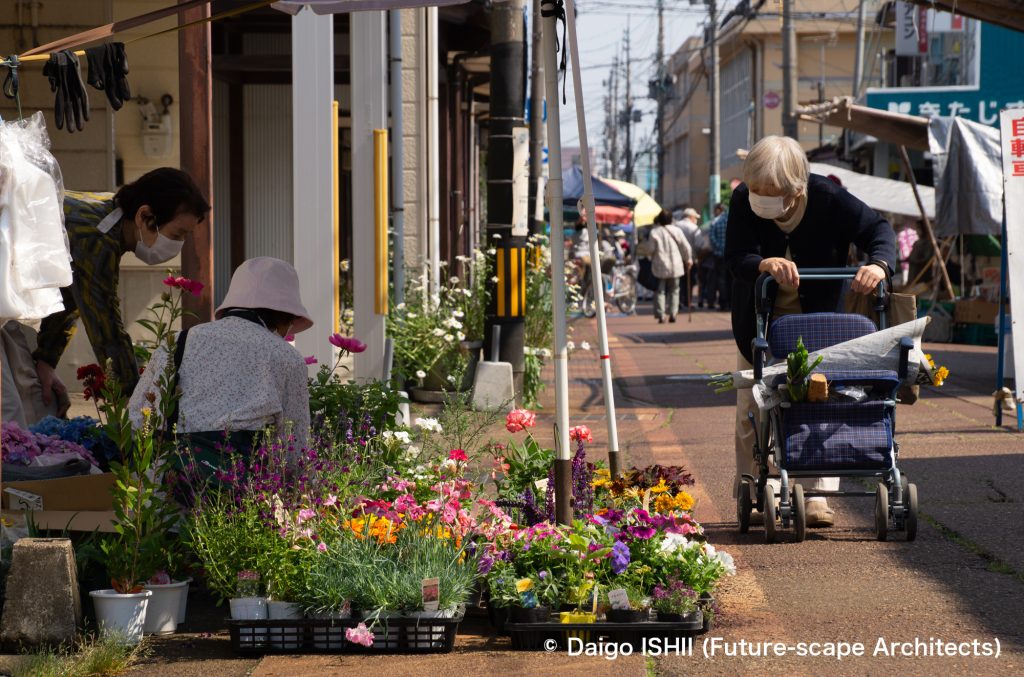
See Shiku-no-ichi Market (Four and Nine Market) in the summer. Shopkeepers sells their self-made vegetables.
1985年の市 / Market in 1985

See Shiku-no-ichi Market (Four and Nine Market) in the summer in 1985. Most stands were produced with combination of bamboo and sheets in that time.
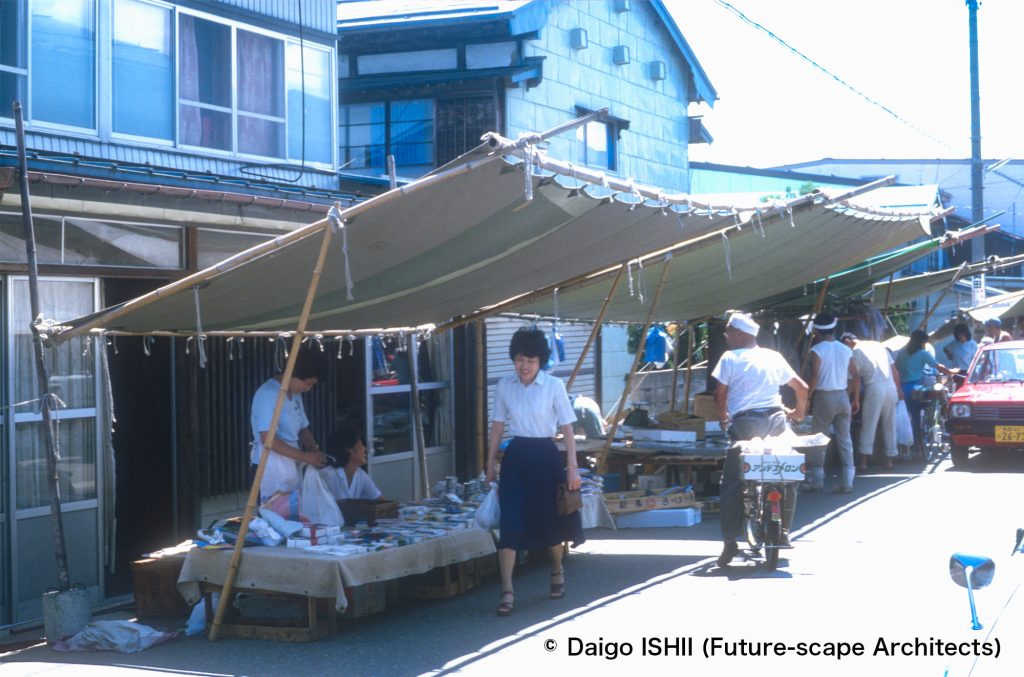
See Shiku-no-ichi Market (Four and Nine Market) in the summer in 1985. Most stands were produced with combination of bamboo and sheets in that time.
ご感想はこちらへ / Click here for your impressions
参考文献 / reference
上越観光Navi
写真の無断使用、転用はご遠慮下さい。/ Please do not use or upload our photos without permission.
